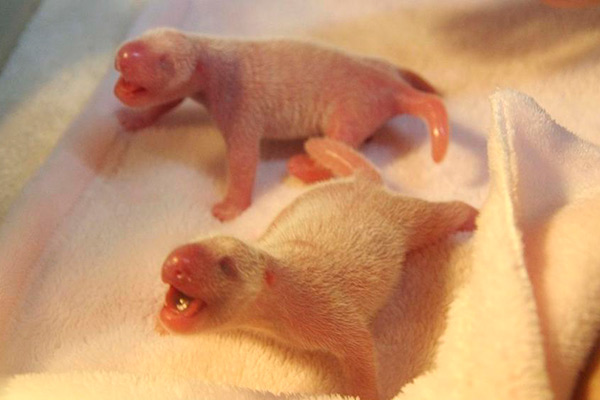
Giant panda twins were born at Chengdu Research Base of Giant Panda Breeding, June 22, 2015.[Photo/Xinhua]
A record 23 pandas have survived so far this year after being born using artificial insemination techniques, a Chinese breeding center announced on Oct 22.
A total of 26 panda cubs were born, including nine pairs of twins and one born to Mei Xiang at Washington’s Smithsonian National Zoo of the United States, according to the China Conservation and Research Center for the Giant Panda (CCRCGP), the world’s largest artificial breeding center for the rare species.

One of the giant panda twins born at Chengdu Research Base of Giant Panda Breeding, June 22, 2015.[Photo/Xinhua]
With the new cubs, the center currently has 218 pandas. The previous record was set in 2013, with 20 panda cubs added in a year.
Despite the early death of three cubs, the total number of survivors and twins have both set new records since the center was built in southwestern Sichuan province in the 1980s, said Heng Yi, head of the center’s publicity office.
The panda cubs, between one and three months old, are all in good health. “May they survive and thrive,” said Heng.
He attributed the baby boom to the more mature breeding techniques, frequent cooperation with foreign zoos and a bigger “talent pool” for the annual breeding program.
“Over the past two decades, we have seen a steady growth of artificially-bred pandas in our center, meaning we have more options when selecting healthy and biologically-suitable candidates for our breeding program,” said Heng.
Giant pandas are known as “living fossils” and 1,864 pandas live in the wild, mostly in the provinces of Sichuan and Shaanxi. There were 375 giant pandas in captivity by the end of 2013, according to the latest figures released by China’s forestry administration this spring.
Giant pandas have a very low fertility rate because they are sexually inactive. Female pandas become pregnant only once a year and deliver three cubs at most each time.
The fertility of captive giant pandas is even lower because they do not move much, experts said.
